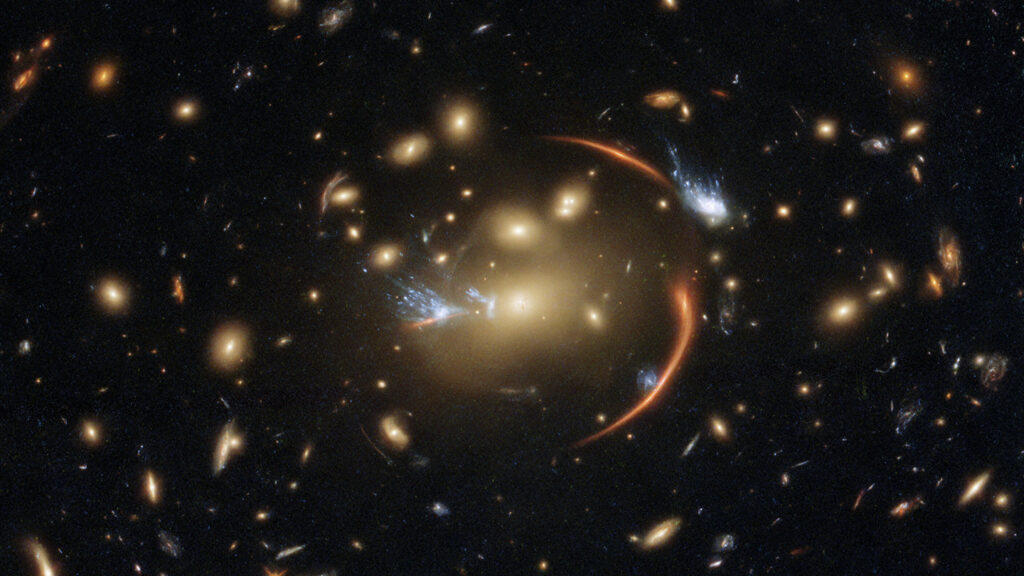A meandering trek taken by light from a remote supernova in the constellation Cetus may help researchers pin down how fast the universe expands — in another couple of decades.
About 10 billion years ago, a star exploded in a far-off galaxy named MRG-M0138. Some of the light from that explosion later encountered a gravitational lens, a cluster of galaxies whose gravity bent the light so that we see multiple images. In 2016, the supernova appeared in Earth’s sky as three distinct points of light, each marking three different paths the light took to get here.
Now, researchers predict that the supernova will appear again in the late 2030s. The time delay — the longest ever seen from a gravitationally lensed supernova — could provide a more precise estimate for the distance to the supernova’s host galaxy, the team reports September 13 in Nature Astronomy. And that, in turn, may let astronomers refine estimates of the Hubble constant, the parameter that describes how fast the universe expands.

